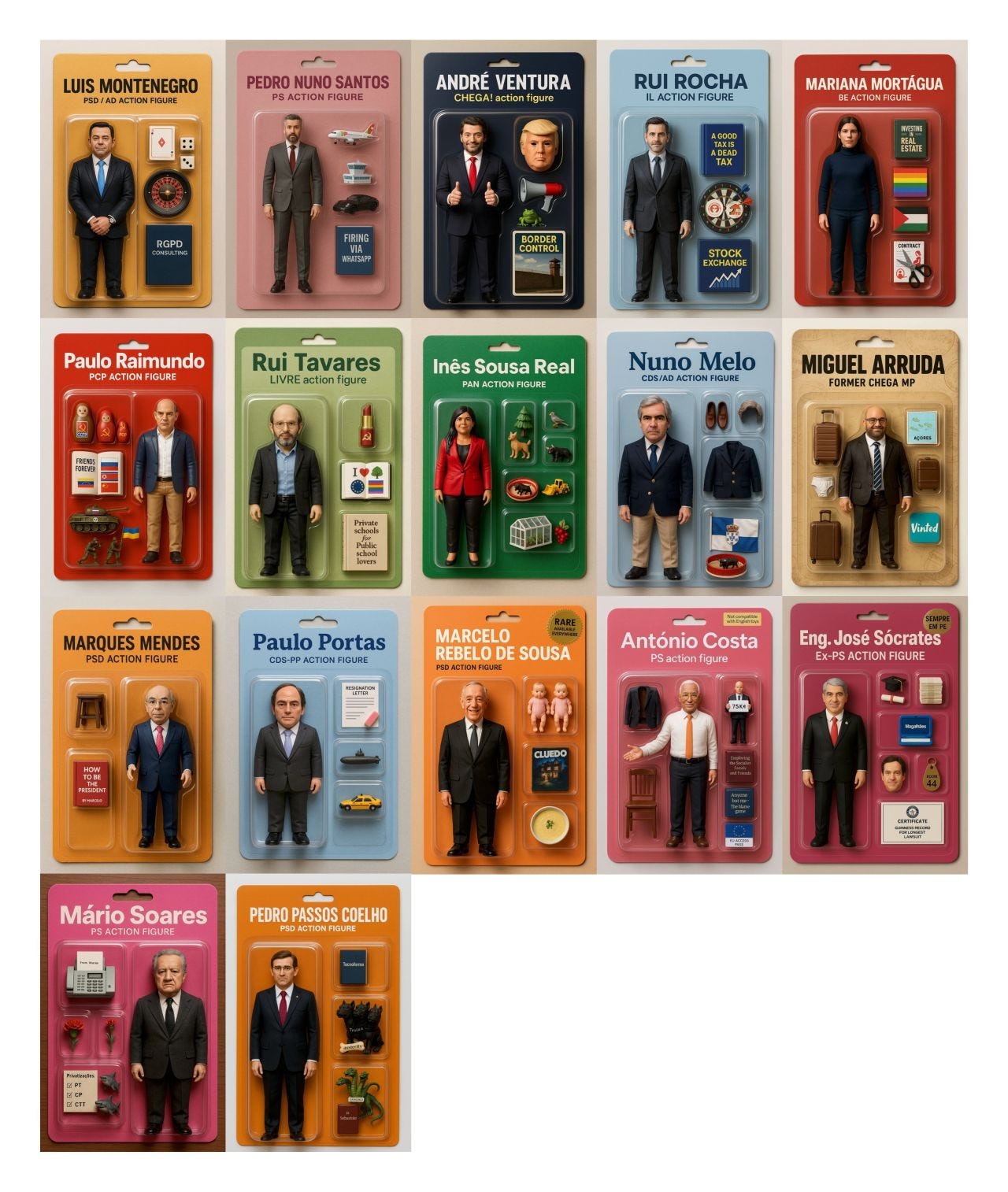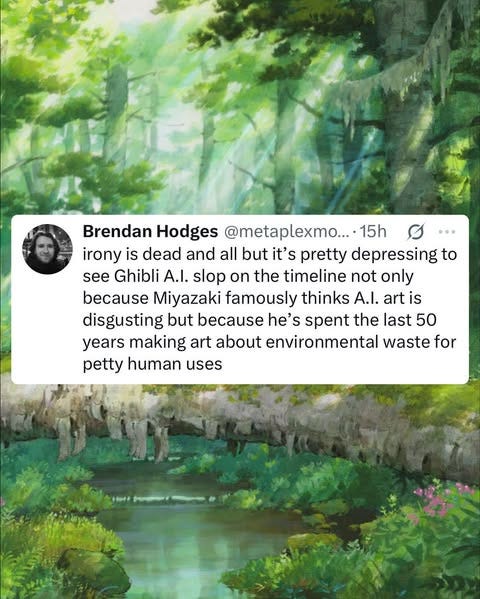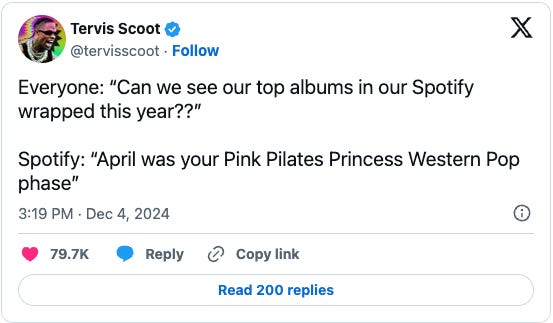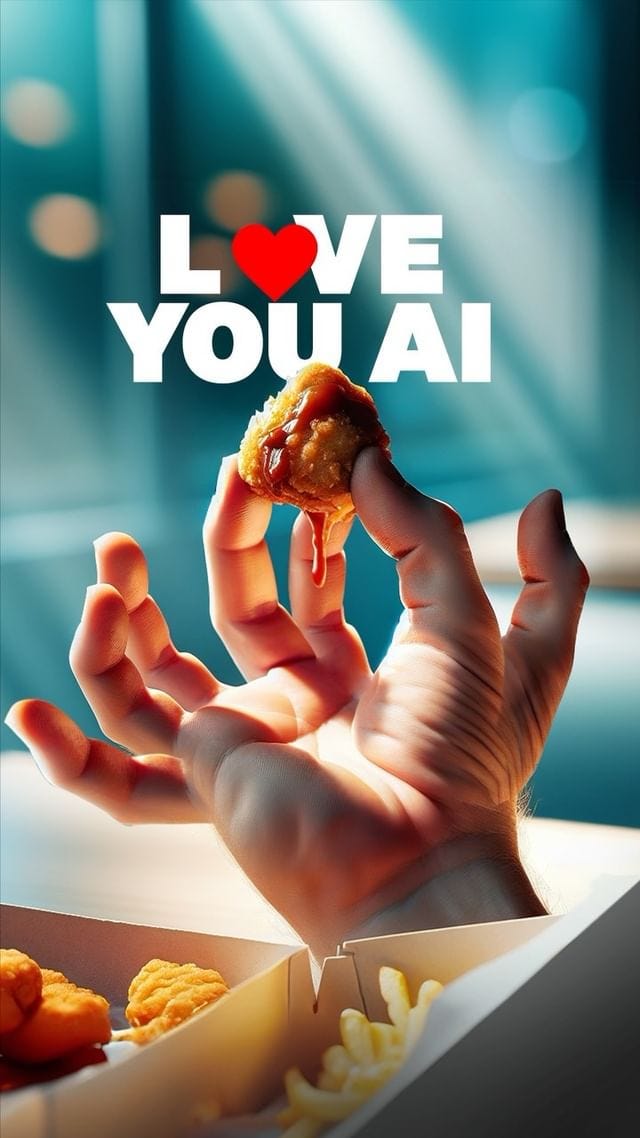AI Isn’t the Problem. Intention Is.
Why the internet feels a little more synthetic lately — and what it means for brands trying to stay distinct in a world of generative sameness.
We’re living in a wave of GenAI-generated aesthetics — from AI ‘doll’ action figures to Studio Ghibli-style renderings that turn your dog into a mythical sidekick.
Pinterest boards are overflowing with wedding hairdos no stylist could recreate, and Instagram feeds are morphing into uncanny dreamscapes. Social feeds are becoming uncanny moodboards — less creative expression, more algorithmic hallucination.
Welcome to the era of AI slop — content that looks polished but feels empty, that grabs attention but leaves no impression. The problem isn’t the tools. It’s the taste — and the shortcuts we’re taking in the name of scale.
Pinterest, But Make It Unusable
Pinterest users have been vocal about the AI content taking over their feeds. Once a haven for real-world inspiration and creative planning, the platform is now littered with images that either don’t exist or can’t be replicated in real life. Wedding hairdos that defy physics. Outfits that exist only in pixel. And hands... lots of extra fingers. Some users have even called the issue "The Enshittification of Pinterest."
"I stopped using Pinterest because 80% of the results are AI-generated images” — Reddit user Mjrn
Users aren’t just scrolling past; they’re leaving. It’s a warning shot for any brand prioritising generative volume over creative value.
Spotify Wrapped & the Year We Didn’t Feel Seen
Spotify Wrapped has long been the poster child for personalised, joyful marketing. But in 2024, fans felt something was off. Made-up genres like "Pink Pilates Princess Strut Pop"? AI-generated podcast hosts summarising your stats with zero emotional payoff? Wrapped, once culturally iconic, was now accused of being "AI slop."
"Spotify Wrapped was famously created by an intern. There’s currently no code for that." - Paul Maker, Raconteur
This wasn’t about the tools, but how they were used. It’s a reminder that even the best-loved formats can falter when human insight is removed from the loop. AI can replicate structure. But not sentiment.
KFC, Coca-Cola & When AI Doesn’t Taste Like the Original
KFC’s attempt to blend humour and AI came in the form of an April Fools’ campaign that introduced Colonel Sanders as an AI-generated influencer, complete with algorithmically designed content. While the brand aimed for irony, the execution lacked clarity.
The AI-generated visuals and messaging left many confused — was it satire, or a serious new direction? According to the brand’s Instagram post, audiences described the creative as "inauthentic" and even "creepy," signalling that the joke hadn’t landed, and the trust had wobbled.
It’s important to remember that not every AI experiment will land, but with the right creative oversight, they become learning curves, not cautionary tales.
Coca-Cola’s Christmas campaign, developed with three AI studios, attempted to evoke festive nostalgia by remixing its iconic 1995 "Holidays are Coming" spot. Instead of rekindling warmth, it delivered jarring, uncanny animations that left some viewers feeling cold.
Still, the ambition was clear: experiment with new production tools to deliver at scale. The lesson? AI can support creative efforts, but emotional resonance still requires human hands on the steering wheel.
There’s a Better Way: KitKat & Dove
It’s not all doomscrolling. Some brands are doing it right.
KitKat’s "Have an AI Break" campaign is a masterclass in satire — and it won Gold at the 2024 Strategy Awards in the Content category for good reason. Rather than use GenAI to impress, it used it to mock the current overuse of the technology. The ad introduces a fictional, AI-generated version of KitKat’s classic line, with cringe visuals and wooden copy like “Have algorithmic pause.” A human voice quickly interrupts to remind us: “Nothing beats the original.”
It struck the perfect balance — embracing the AI conversation without losing the brand’s human charm. The campaign resonated because it acknowledged the hype, stayed true to its tone, and gave us a laugh (while reminding us what real creativity looks like).
Dove’s Real Beauty campaign also held its ground. To mark 20 years of its Real Beauty platform, Dove launched a renewed commitment: a formal pledge to never use AI to represent real women in its advertising.
The campaign was accompanied by research revealing that 90% of women say they’ve been exposed to AI-generated images of beauty — yet 76% don’t trust these portrayals.
Dove responded not with synthetic visuals, but with a rallying cry for authenticity over automation. It wasn’t about jumping on a trend — it was a values-first statement that resonated precisely because it felt honest, not engineered.
The brands getting it right are the ones using GenAI to amplify their brand world — not replace it.
The Commoditisation of Creativity
As Lucy Jameson of Uncommon put it in on the Advertising: Who Cares? podcast, the rise of GenAI has created an environment where brands feel pressured to scale quickly and automate everything. But in that pursuit lies the danger of the commoditisation of creativity. When everyone uses the same tools, the same prompts, and the same templates, the result is sameness. And sameness is deadly for brand building.
"The more content you generate, the more average it becomes — unless you bring a sharp point of view." — Lucy Jameson
Originality ≠ Output
Just because GenAI can churn out a thousand images doesn’t mean any of them will move people. But that doesn’t mean it can’t play a valuable role.
Most GenAI tools are designed to generate what’s statistically likely — the median idea, not the breakthrough. That’s incredibly useful for speed, scale, and variation. But the spark? That still comes from us.
Originality lives in tension, context, and emotion — the things that don’t always scale, but always stick. It’s the unexpected insight, the cultural nuance, the perfectly timed punchline. That’s the stuff people remember.
GenAI can help us get there faster. But it still needs human intent to point it in the right direction.
The Value of Difference
Tom Roach’s essays — "The Stupidity of Sameness" and "Brand Building in a World of Creative Fragmentation" — feel more urgent than ever in the age of AI-generated content.
In a world where creative output is increasingly templated, templatised, and tool-generated, brands risk losing the very thing that made them memorable. Roach points out that with every platform pushing its own formats, and with brands tailoring execution by channel, there’s a real danger of brand fragmentation. The core brand idea gets diluted, pixel by pixel.
And then, when you add AI to that mix — with its tendency to output the most "probable" option — that sameness becomes exponential.
“The stupidest thing you can do is make work that looks like everyone else’s.” — Tom Roach
The antidote? Go back to fundamentals:
Clear brand positioning — not just a tagline, but a truth that informs every brief
Distinctive brand assets — those repeatable visual, tonal or structural cues that are unmistakably yours
Emotional resonance — the human layer that makes someone feel something when they see or hear your brand
As Grace Kite writes in Marketing Week, brand building still counts. In fact, it may matter more now. When short-term, performance-driven optimisation dominates, the long game of memory and emotion becomes your strategic advantage.
The brands that win won’t be the ones that adopt GenAI the fastest. They’ll be the ones who can use it without losing what made them different in the first place.
Not All Brands Need AI in Comms
Rachel Karten in her Link in Bio newsletter made an important observation: not every brand needs to use GenAI in their comms. In fact, taking a conscious stance not to use it can be a powerful brand move in itself — especially in categories oversaturated with AI visuals. AI isn’t a requirement — it’s a tool. Knowing when not to use it is as strategic as knowing when to go all in.
"We don’t need AI to be more human. We need brands to be." — Rachel Karten, Link in Bio
This sentiment echoes across campaigns gone wrong. Often it’s not the AI itself that fails, but the brand’s attempt to make it do the job of emotion, taste, and timing. Tools can support creative teams — but they can’t lead them.
The Future of Organisational AI: Strategy, Not Just Execution
There are so many promising use cases for AI — from content personalisation and prototyping to transcreation and trend prediction. But to realise the benefits, organisations need more than experimentation. They need a clear strategy and a coordinated approach. Siloed initiatives can lead to inconsistency, inefficiency, or worse — brand risk.
This is where governance comes in. A cross-functional AI Steering Committee — bringing together brand, marketing, legal, tech, and ethics — can help set standards, define red lines, and align AI usage with brand values. Think of it as your internal taste team: part innovation lab, part risk radar. Because deploying GenAI isn’t just about generating content — it’s about ensuring what you create still feels right, safe, and distinct.
GenAI Isn’t the Problem
I’m not against GenAI. Quite the opposite. I think it can massively drive growth, creativity, and speed. But it needs to be integrated properly. Thoughtfully. With your team, not in place of them.
Use it to amplify creative process, not replace it. Use it to support your strategy, not flatten your brand voice. Use it to scale what works — not automate what should be felt.
We’re not at war with machines. But we are in a race for meaning. If brands want to win hearts — not just timelines — they’ll need to do what machines can’t: bring nuance, tension, direction, and a real point of view.
Or as Zoe Scaman puts it: “We don’t win by rejecting the machines. We win by knowing what makes us different from them — and doubling down on that.”
If this hit a nerve, feel free to share with someone trying to cut through the noise. Or the AI slop.
Sharing is caring — and keeps the good stuff going.
Next up:
I’ll be diving into the internal side of GenAI — how to build smarter workflows, improve content ops, and futureproof your marketing engine (without frying your team in the process).
Thanks for reading. It means a lot.
Venice 💛






